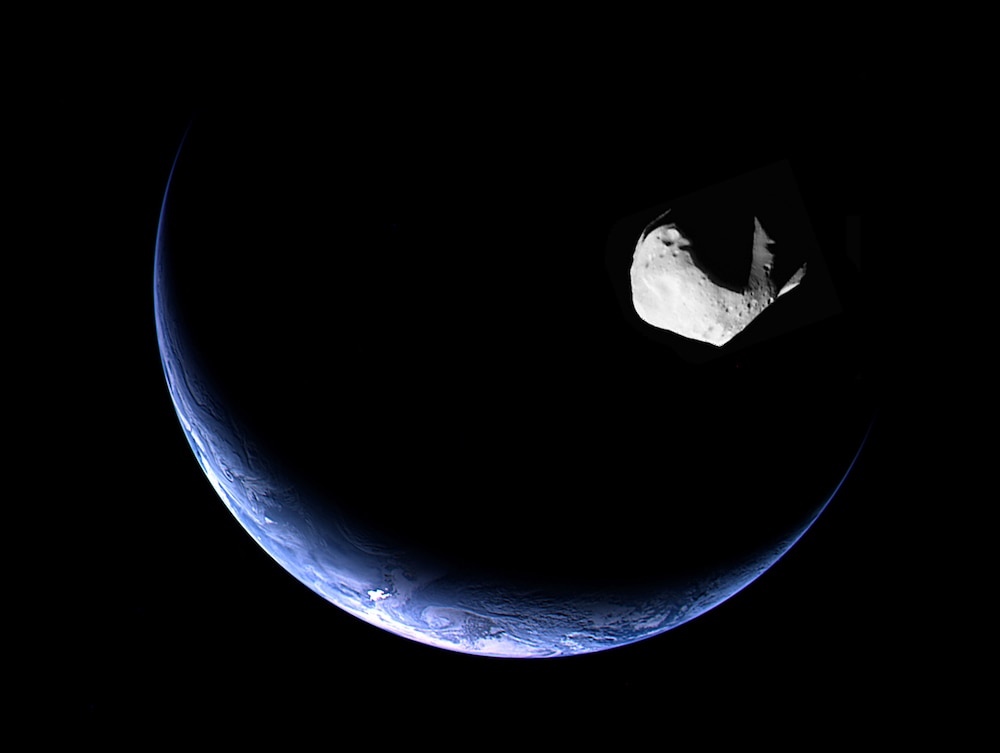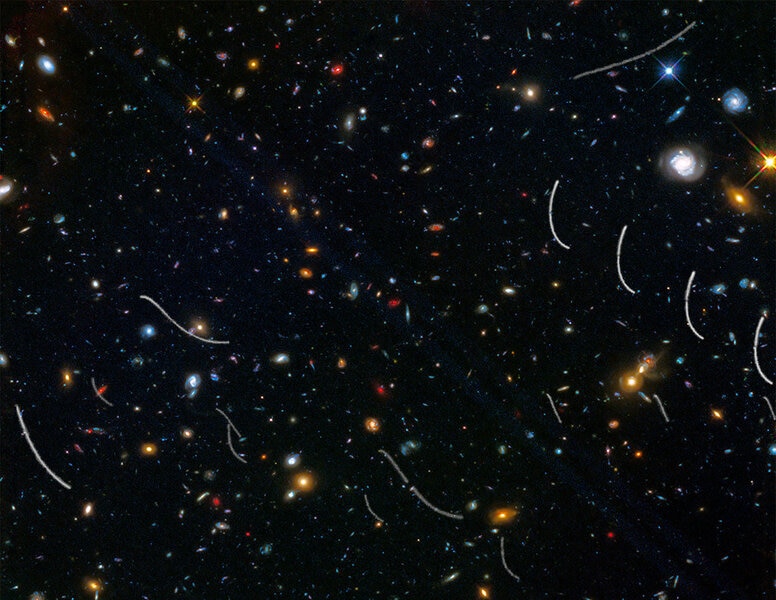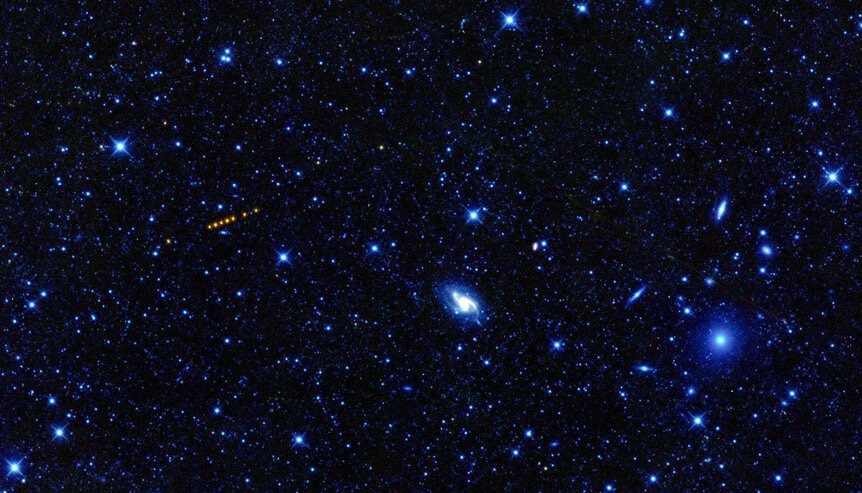Create a free profile to get unlimited access to exclusive videos, sweepstakes, and more!
New method significantly speeds up the search for dangerous asteroids
THOR finds Mjölnear-Earth asteroids.

Note: This article was written in part to help promote Asteroid Day on June 30, a global effort to raise awareness about the dangers and scientific importance of asteroids. It’s on June 30 every year, the anniversary of the big Tunguska impact of 1908, and the B612 Foundation mentioned below is one of the founding partners. I was actually scheduled to be in Luxembourg — Asteroid Day HQ — to moderate some panels and talk about asteroids, but a health issue (now resolved!) kept me from traveling. Still, I hope y'all take a look at the cool events scheduled, including live streams with scientists, astronauts, and other experts. Learn stuff and have fun!
Finding near-Earth asteroids just took a very big leap thanks to THOR.
Yeah, different THOR. This one stands for Tracket-less Heliocentric Orbit Recovery, and it’s a method of not only hugely speeding up how quickly asteroids can be found, but also allows the search to be made using old, archived images independent of when they were taken. It’s faster and can use the vast database of observations just lying around online. So yeah, this is a big deal.
Finding asteroids in general isn’t hard, it’s just time-consuming. As they orbit the Sun they appear to move slowly across the sky. So you use a telescope to take an image of a single spot, wait a small amount of time — usually going to other spots in the sky to observe them — then reobserve that same spot. Do it again, and now you have three images of the same patch of sky.
Stars don’t move, so if you align the three images the stars all appear in the same place, but the asteroid will have moved, making a line of three dots. This is the track of its motion over that time, so this short line is called a tracklet. It can be enough to use the centuries-old equations of motion to create a predicted orbit for the object, and the equation describing that orbit can then be projected into the future or the past to see where it will be or was on the sky; future observations or previously archived ones can be searched to see if it’s there, and the orbit can be refined.
In practice it’s a lot more complicated of course, but this is more or less how it’s been done. One problem is this method is very intensive of computer time and not hugely efficient. Another is that asteroids don’t always appear to move in straight lines; the Earth’s motion around the Sun — or an orbiting observatory’s motion around the Earth — can make those lines wiggle, making it harder to spot asteroids. Also, as huge surveys come online in the next few years they’ll find millions of asteroids (!!), and this method will get bogged down trying to track them all.
Enter THOR [link to paper], a project developed by the Asteroid Institute, a project from the B612 Foundation. The idea here isn’t to track the asteroids themselves, but to create theoretical test orbits for an asteroid, which is kind of backwards from the usual way of doing things. A test orbit is really just the equation for a made-up orbit, say one that’s circular with a distance of 300 million km from the Sun at a given tilt and orientation. This generates a set of numbers called the orbital parameters, and they in turn define an equation that can be solved for where an asteroid is at a given time.
That test orbit is then projected forward or backward to the times of the other observations, which are then searched for objects that are close to that path. Algorithms for that sort of search are common and tend to be pretty fast.
There are several advantages to this method — the Asteroid Institute has a good FAQ for explaining all this — but one that is really striking is that it doesn’t necessarily need observations taken close together in time and at a given cadence to work. The location of a potential asteroid on a test orbit can be calculated for the time of any given observation from any observatory. Since we know when an observation was made and also where in the sky it was taken, it’s possible to see if the potential asteroid was in that observation at that time, even if it was taken weeks ago or more.
That’s extremely powerful. There are a lot — a lot — of astronomical observations stored in databases, and in fact the team that created the algorithm tested it out on real data. They used two weeks of observations from the Zwicky Transient Facility, a huge sky survey, to search for potential asteroids, and were able to recover more than 97% of previously known asteroids that appeared in the data! Impressive.
They also used data from the NOIRLab Source catalog, an immense database of astronomical observation, and examined a month’s worth of observations. They found 104 new asteroids in the data, which have been confirmed by the Minor Planet Center. So, it can find known asteroids as well as new ones. That’s important because new observations can trigger thousands of alerts about potential asteroids; if these can be culled rapidly for known asteroids that’s a big time saver right there.
THOR can hammer out asteroids rapidly and across disparate observations, and can use old images to really nail down the orbits as well. As those new huge surveys come online, it looks like THOR will be incredibly useful in finding many of the asteroids expected to be discovered — something like 6 million in the next decade.
That’s a lot of rocks. Knowing where they are and, more importantly, where they will be, is obviously pretty important, so I am all for this.
Note: If you’re a code nerd, THOR is on GitHub.




























